How to see the best of Japan in 10 days!
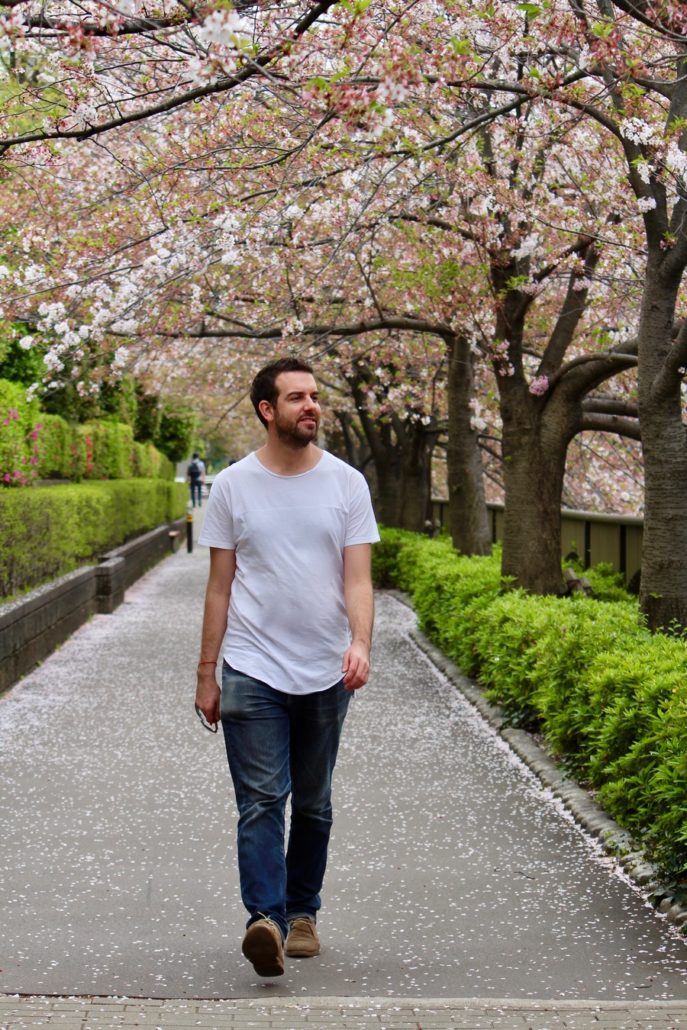
I’m not normally a fan of fast travel – I much prefer the slower style of pulling up at a village, town or city, an open-ended timeframe and no particular plan. However the practical realities dictate that I am sometimes unable to spend a long time in a country or one particular place. That was the case when I travelled to Japan recently – ten days and a plan to see as much of one of my favourite countries in the world!
That said, there’e no need to rush around like a madman trying to see everything at once. With ten days in Japan it’s quite easy to see the highlights of this unique corner of the earth! Here’s how I spent 10 days in Japan and had the time of my life!
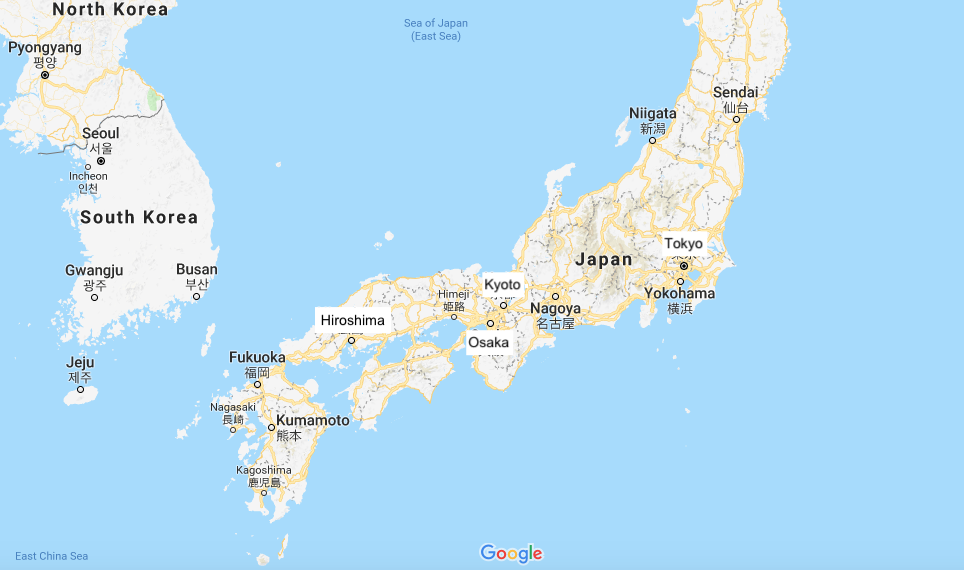
(Map: Google Maps)
Tokyo (3 days)
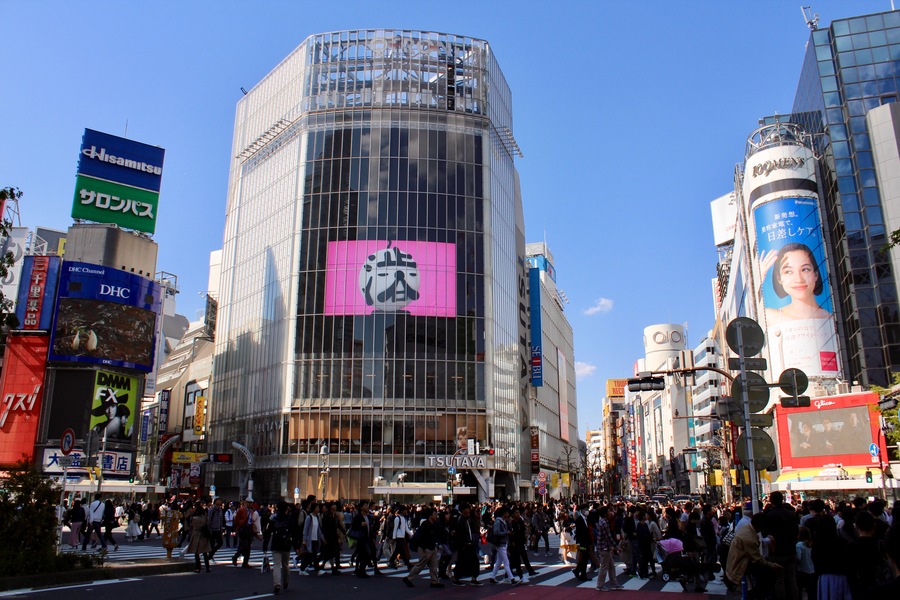
Shibuya Crossing, Tokyo
Spend three days in Tokyo, Japan’s mind-blowing capital. On the first day you could go to the Imperial Palace Gardens, then Ginza for some shopping, then Shinjuku in the evening for dinner and to walk through the Tokyo of cinematic fame. On the second day start at the frenetic Tsukiji Fish Market, before heading to Akihabara ‘Electric Town’ to get your anime on. In the afternoon head to Harajuku for a spot of people watching and to admire the serene Meiji Shrine, before dinner and a walk around Shibuya crossing. On your third day you could take your pick from a walk around the Roppongi Hills precinct and check out the brilliantly tacky Tokyo Tower; or to get really high you could head to Tokyo Sky Tree further afield. Tokyo Disneyland is also an option, or if you’re more historically inclined you can go to the controversial Yasukuni Shrine and the associated Yushukan museum which concerns World War II.
Osaka (1 day)
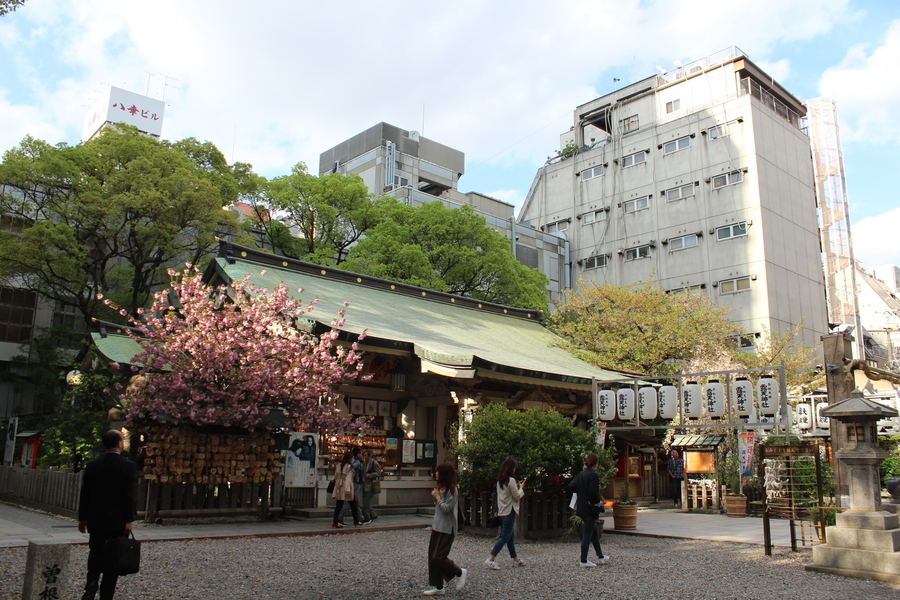
The Ohatsu Tenjin Shrine in downtown Osaka
Osaka is Japan’s second city (if you include all of its satellite cities as part of ‘Greater Osaka’). It’s grungier than Tokyo and famed for its foodie scene, with a smattering of other attractions The first is the historic Osaka Castle, surrounded by a moat and cherry blossoms; come early to avoid the crowds if you want to go inside. In the downtown Umeda district is the Ohatsu Tenjin Shrine, dedicated to Osaka’s own Romeo and Juliet-type tale of romance, while just nearby are some seriously big shopping malls. Connected to Hep Five mall is a gigantic ferris wheel which affords views across the Osaka metro area. Finish up with a bite to eat – try the local delicacies okonomiyaki (savoury vegetable pancakes) and takoyaki (octopus dumplings) – buy them street side or from sit-down shops in Dotonburi, Osaka’s busy commercial entertainment quarter.
Kyoto (3 days)
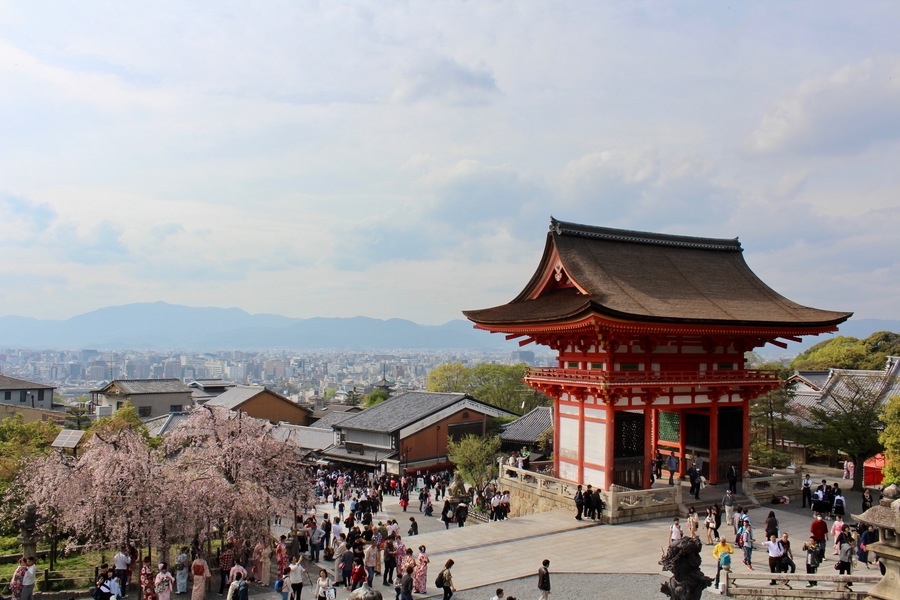
Kiyomizu Dera, Kyoto
Kyoto is a place where you can really slow down and take things in. The old capital of Japan, it’s dotted with over 2,000 temples and shrines, most of which are still functioning today. A bus pass is the best way to get between the most interesting and beautiful Buddhist temples and Shinto shrines, which include the serene Kinkakuji (the “Golden Pavilion”), Nanzen-ji with its beautiful parkland and viaduct, hilltop Kiyomizu Dera, and Yasaka Shrine in the downtown Gion district – also a great place to end up for dinner. On day two you can head out towards the enchanting Arashiyama bamboo forest on the northwestern outskirts, and the startlingly memorable Fushimi Inari Shrine in the south east. On day three you could take the train to Nara, another historic capital filled with temples, shrines and castles, you could spend the day poking around some of Kyoto’s lesser visited shrines, or you could put your feet up and bliss out at the Funaoka Onsen, an essential Japan experience.
Hiroshima (2 days)
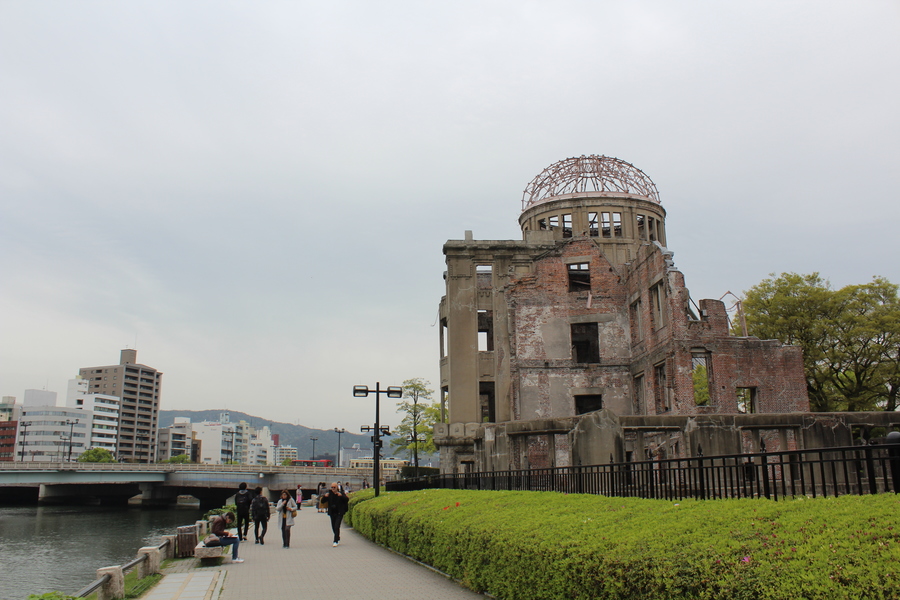
Atomic bomb dome, Hiroshima
Hiroshima would probably have been a missable city on the tourist trail if it wasn’t for a fateful day in August 1945. The first of only two atomic bombs to be used in the history of warfare exploded above the city, leaving behind haunting reminders of the horror that unfolded. The main remanent of the old Hiroshima is the Genbaku Dome, once the local industrial promotion hall, but now part of a wider Peace Memorial. Nearby, in the city, is a hospital which was the actual hypocentre of the explosion – look out for the plaque in the wall. Across the river be sure to visit the Peace Memorial Museum, the underground Memorial to the victims of the Atomic Bombing, the emotional Children’s Peace Monument, the Korean Atomic Bomb Victims Cenotaph, and the Memorial Mound, made of the ashes of those victims who were never identified.
On the second day take a tram to the ferry dock at Miyajimaguchi, or pay a bit more and take the ferry directly from near the A-bomb dome, towards Miyajima. Miyajima, also known as Itsukushima, is a large island in Hiroshima Bay, which is known for its natural beauty and shrines built upon a tidal bay. Time your visit to be there between tides to make sure you see the beautiful Itsukushima shrine and its torii (gate) that seems to float on water! Hotels in Hiroshima will be able to advise you of tide times.
How to get around
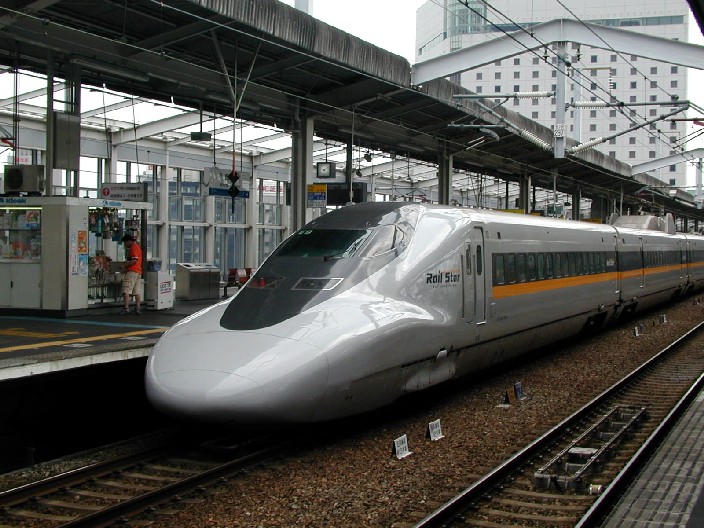
(Image: w:it:Utente:Adriano, Wikimedia Commons)
Shinkansen! The “bullet train” speeds across the countryside and whisks you between cities in a matter of minutes and hours! Unlike flying you don’t need to commute to an airport outside the centre – Shinkansen regularly depart and arrive from the centre of cities in cavernous stations connecting with local metros.
Tickets aren’t cheap, but they’re comparable to flight tickets, and can usually be bought at short notice – just turn up and go. Because of their high frequency and available seats, getting from one city to another is as simple as jumping on a train and arriving a short time later – no different to taking a local metro.
I’ll be writing about how to use the Shinkansen system in a later post, but sample trip timings and ticket costs are listed below;
Tokyo – Osaka: ¥13,000 – 14,000 (2 hours 40 minutes)
Tokyo – Kyoto: ¥13,000 – 14,000 (2 hours 25 minutes)
Tokyo – Hiroshima: ¥18,000 – 19,000 (4 hours)
Osaka – Kyoto: ¥1,000 – 2,000 (15 minutes)
Osaka – Hiroshima: ¥9,000 – 10,000 (1 hour 25 minutes)
Kyoto – Hiroshima: ¥10,000 – 11,000 (1 hour 40 minutes)
That’s not all!
Of course, there’s so much more in Japan to see that can’t be covered in 10 days, but I feel that if you’re pressed for time and want to pack as much in as possible, this itinerary is the perfect highlights package!

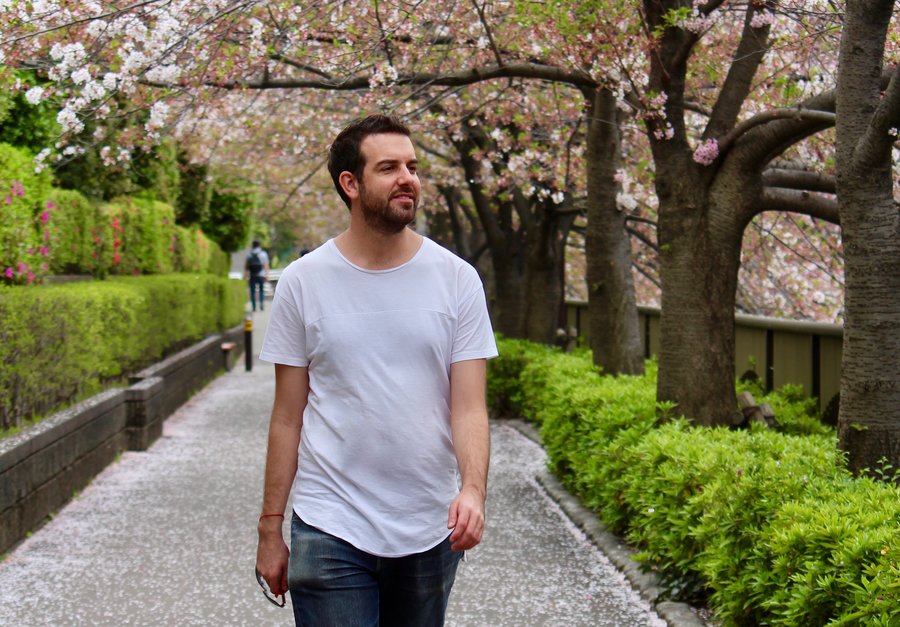



The ease and speed of the Shinkansen is what makes an incredible itinerary like this doable! Osaka also has an incredible aquarium, but for the sheer joy of Japan you can’t go past Kyoto.
Absolutely – it wouldn’t be possible in such a short time without the wonderful Shinkansen! Thanks for reading 🙂
A little known treasure that is worth visiting in Tokyo is an area called Yanesen, which is 3 suburbs bunched together that preserve an old Edo feel. The name comes from Yanaka, Nezu & Sendagi.
Yanaka is an area that was spared from not only the 1923 earthquake but also the firebombing of WW2. And the streets, in particular Yanaka Ginza, are like going back in time with lots of great traditional street snacks and arts & crafts. Yanaka also has a long history of coffee in Tokyo & there are numerous places to get good coffee.
Nezu is affectionately known as “Harajuku for old people”, but that shouldn’t be a turn off…the area has a lot of great traditional shops specialising in papers and traditional arts & crafts. It’s also home to one of Tokyo’s best shrines. As well as being one of the oldest places of worship in Tokyo, Nezu shrine is often said to be the most beautiful shrine in Tokyo. April-May is best when they have an azalea festival. I’ve visited a couple of times, but always during summer and it is, without a doubt, my favourite shrine outside of Kyoto. The whole Yanasen area is worth spending a day strolling around, eating traditional snacks, taking in the relaxed atmosphere, shopping and getting decent coffee (which can be hard in Tokyo).
Great tips! Thank you!! I’ll have to visit next time I’m there!
Hi Tim, we went to Tokyo last year and we had 4 days which wasn’t enough. I feel you have covered the highlights really well. I would recommend Tokyo tower at the later afternoon so you can watch the sunset and the lights come on. Btw your dear mum Fay gave me my travel bug when I was 15 in 1980 and we were working together . I loved listening to her stories about her trip to Europe. I started traveling at 17 and haven’t looked back. Keep travelling and enjoying life
Thanks Tracy! Mum seems to have a great way of passing the travel bug on to people! Where’s your next holiday planned for?
I’m currently planning a trip to Japan next year beginning with the Rugby World Cup, then staying for part of the winter to experience the epic powder. Thanks for all the tips, super helpful!
Awesome! I hope you have a great time – safe travels! Thanks for reading 🙂